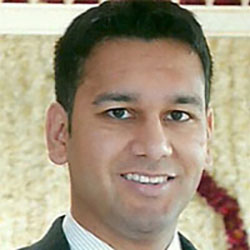Blog Post
Impact of Public Reporting of Cardiovascular Outcomes on a Non-Reported Procedure
Public reporting may affect physician decisions to perform diagnostic intervention

Public reporting of cardiovascular outcomes remains controversial, 20 years after New York became the first state to mandate reporting of mortality data for percutaneous coronary intervention (PCI). It has been associated with a lower likelihood of performing potentially lifesaving procedures, perhaps reflecting an avoidance of intervening in high-risk cases. It’s possible that public reporting may also impact decisions to perform nonreported but related cardiovascular procedures. In a new study, my colleagues and I looked at how public reporting of PCI outcomes influenced the decision to provide out-of-hospital cardiac arrest (OHCA) patients with a coronary angiography. This minimally invasive diagnostic procedure uses a catheter to observe heart abnormalities not measurable from outside the body.
We used a large administrative dataset to examine 50,000 OHCA patients between 2005 and 2011. We looked at two states, New York and Massachusetts, that publicly reported PCI outcomes, and compared them to five nearby states that did not. Our question: what were the odds of receiving a coronary angiography with OHCA in the two groups?
Robert Yeh and Stephen Waldo previously published work showing that patients with acute myocardial infarction and cardiac arrest or shock were less likely to receive PCIs in states with public reporting. Among patients with shock or cardiac arrest, this was a particularly powerful association. There was a 42% reduction in odds of receiving PCI in New York and Massachusetts compared with other states.
So, does this risk aversion extend to performing a diagnostic angiogram in a broader group of OHCA patients? Diagnostic angiogram is a nonreported procedure, but if you take a patient for an angiogram, you might feel more compelled to perform a PCI.
In our analysis, only about 10% of OHCA patients were identified as having acute myocardial infarction. Roughly 20% of them received an angiogram at some point during their admission. We found OHCA patients were 16% less likely to get a diagnostic angiogram in New York and Massachusetts compared to states without public reporting. While this difference did not meet the threshold for statistical significance, the wide confidence interval around it includes a lot of potential for avoidance of interventions in high-risk cases.
It’s important to be careful about interpreting subgroups when the whole cohort is insignificant. However, we did find that older patients (age>65) with OHCA were considerably less likely to undergo diagnostic angiography than patients in other age groups. One would think that this group has higher risk of arrest from a coronary artery cause.
My interpretation of the study: I think it’s likely that physicians are avoiding clinical interventions at two steps. First, some patients do not receive a diagnostic angiogram. Second, among some patients who do receive one, no PCI is performed despite a culprit lesion. I think avoidance of risky cases is stronger at the “PCI level” than at the level of the angiography. With a couple more years of data, we probably would have seen a clearer signal even at the angiography level. Why didn’t we use more recent years? Unfortunately, the Nationwide Inpatient Sample state identifiers were lost in 2012.
Providing routine coronary angiography to OHCA patients is controversial. Observational data has suggested benefits of this procedure, but there are plenty of potential biases in these studies. A recent randomized controlled trial did not show benefits of immediate angiography for these patients compared with a delayed procedure. Importantly, we found no mortality difference between the two groups of states. So, our current study represents some observational data that does not necessarily support routine diagnostic angiography in low-risk OHCA patients. Stay tuned for more randomized controlled trials looking at this.
One last general thought: We always talk about physician responses to metrics in terms of how they are affected by public reporting of outcomes. However, I think the most powerful current influences come from payers who examine metrics of varying quality. Payers pressure health administrators based on this data, who in turn pressure physicians. This is much more ubiquitous than public reporting, which is limited to a few states.
So, we really may not have a good handle on how much avoidance of high-risk cases and gaming of metrics is occurring and how many patients are being harmed. This would be tough to study since finding a group of patients whose physicians experience these pressures (and another group whose physicians do not) is not straightforward. Why do physician responses to metrics matter? I recommend reading Anish Koka’s writing on this topic, a more powerful way of understanding the consequences of metrics for physicians.